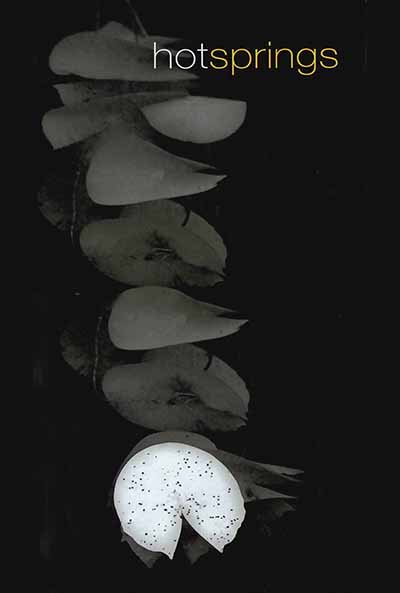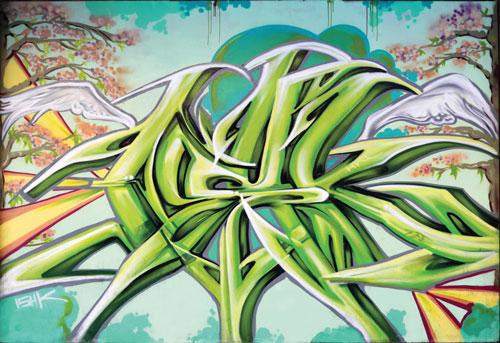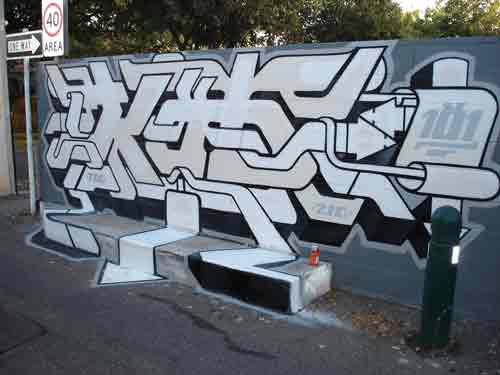.png)
These three books are physically impressive, easily able to press multiple flowers and crush many knees. Each of them breaks or at least indicates new ground by pointing at possibilities for art histories that are new, unwritten or undermapped. In their focus on geography - Oceania, the Northern Territory, the South – they provide definite parameters for their investigations. Though in each case the apparent neatness of geographic or indeed political borders is shown to be illusive.
In Art in Oceania, edited by Peter Brunt and Nicholas Thomas, seven authors who are anthropologists, art historians or curators, all based in New Zealand or the UK, range across their specialities from earliest human settlement in the Pacific to recent urban art. The territory covered is vast and exploratory yet this is an introduction, one that attempts to open rather than close interpretation. The complexities of naming, of stereotyping, of tradition, of modernity, of the entangling of the past and the present are foregrounded, and happily the contemporary finds a place as much as the past. In a way the volume clears a space for its successor.
In the Afterword by Peter Brunt an example is given of another approach to art history that came too late for this book. "At a symposium held in Wellington in 2011, a young Mãori law scholar speaking to an art world audience as an 'outsider' proffered three Mãori concepts – mauri, utu, and ihi and wehi (briefly, a spiritual essence or power manifested through the physical realm; a concept of reciprocity entailing the social or communal aspect of artwork; and the expression and apprehension of power in a work of art or performance) – as dialogical terms for approaching the nature of Mãori art but also any art of any time."
Beginning with a bird-shaped pestle made 1,000s of years ago, and moving from taro terraces to feathers, shells, pottery, bark cloth, masks, houses, sculpture, weapons, drawings, quilts and baskets all the way up to graffiti, rap and video the volume discusses agency and self-perception, the pre-colonial, the colonial, the postcolonial, missionaries, intersections between the art trade, anthropology, exhibitions and museums, tourism, authenticity and the exotic, documentation and presentation. And the accompanying images make the book a vital document.
A talk called ‘The Ocean in Us’ given by Tongan intellectual Epeli Hau’ofa in 1997 at the opening of the Oceania Centre for Arts and Culture at the University of the South Pacific, Suva, Fiji, is cited at the beginning and end of the volume. His call for the contemplation of the Oceanic pasts as relevant to their presents emphasises the importance of continually writing and rewriting histories.
...

In Hotsprings Daena Murray, who was a curator at the Museum and Art Gallery of the Northern Territory for many years, draws on that experience to survey the work of a large number of NT artists. In twelve broad themes, organised into roughly two page brief outlines of each artist’s life and work, Murray deliberately stirs Indigenous and other artists together rather than separating them out, and does this to show that both are responding to the same very particular environment. This is chiefly demonstrated through the images rather than verbally. The work of one artist will be on the opposite page of the work of another to make apparent synergies and resonances, or not.
Murray is a trailblazer in the field of curating the contemporary art of the Northern Territory where curators are not thick on the ground. Her 2008 book and exhibition The Sound of the Sky focused on the history of Territory-inspired art by artists of European origins. In Hotsprings she ambitiously suggests a developing space for art practice that includes a social contract between Indigenous and non-indigenous peoples. She writes: “The non-indigenous trajectory which, on the one hand touches the ‘not-yetness’ of the ‘new’ place, on the other is checked by the ‘nowness’ of open-ended mutual engagement with the people who know the land.”
It seems significant that the works beginning and ending the book are, on the cover - Peter Eve’s black and white photograph Hidden currents (waterlily Nymphaea, in a flooded stream) with its strong references to botany and weather and within the book Chilean born Techy Masero’s Bote Pajaro (birds and boats) floating openwork forms woven from cane and bamboo, photographed against a soft pink sunset over the Arafura Sea on the Darwin Harbour foreshore. For the Territory, which includes the Centre of Australia as well as the North, is a place where weather asserts itself and it is a landing point looking out to sea to other cultures and other stories. Some of the stories Murray tells are well-known in Australian art while others are introductions to a ‘remoteness’ that can be refreshing and, at least sometimes, escape the usual tropes of Australian art history.
…
.jpg)
The book Mapping South is a punctuation point bordering on a full stop in the South Project, which began in 2004 as an initiative of the fertile brain of Kevin Murray. The South Project engaged with South-South dialogue, residencies and cultural exchanges, had gatherings in Melbourne (2004), Aotearoa New Zealand (2005), Chile (2006), South Africa (2007), Melbourne again (2008) and Indonesia (2009), but has gone very quiet at present.
The Mapping South book project called out globally for writing, images and interviews connected to political, artistic, aesthetic and historical questions about the idea of the South, and somehow the far-flung editorial team led by art historian Anthony Gardner pieced together a book of many voices. English is the privileged language though some of the many other languages of the South are present. Each contributor was asked whether they would like their contribution translated into and published in a second language relevant to their text. Among the languages are Spanish, Mãori, Samoan, Korean, Bahasa Indonesian and Brazilian Portuguese.
The structure of the book follows the six South Gatherings, mingles images and texts, and includes a small curated section of works related to an iconic ‘South’ image of the past, Joaquín Torres Garcia’s 1943 drawing América Invertida. Contributors range from Paraguayan art critic and curator Ticio Escobar to Melbourne art historian Nikos Papastergiadis, from the late Pamela Zeplin hailing from Adelaide to Chicago-based artist, activist and curator Jesús Macarena-Ávila. Doubt and enthusiasm, reportage, creative thinking and oblique stories are equally measured in the continuing debates about what ‘South’ might mean or has meant. The Dead Revolutionaries (of South Africa) contributed a Skype conversation over three cities which concludes in bureaucrat, curator and writer Khwezi Gule’s words that: “The framing of the South is not particularly helpful in enabling us to think in different ways, and maybe just boxes us in even more.”
Other contributors found the concept more helpful and even saw it as reflecting what was already present. In the ‘Whose South Where?’ section Beatriz Bustos Oyanedel presents selected works from Our Site a 2012 exhibition shown in Rio de Janeiro, Brazil and Santiago, Chile, about Unasur, the Union of South American Nations formed in 2008. She describes culture as about solidarity, pluralism, access to and redistribution of wealth, as well as a fundamental human right. Robert Brown and Simon Spain write about the Artplay and South Kids partnership and conclude “if artists seek personal, social and political engagement and transformation they would do well to explore their work with children.”
As an observer, and sometime contributor, who attended three South events and edited an issue of Artlink on the topic, I notice many holes in this baggy book but it is still a fascinating document lending a somewhat obscure platform to many engrossing voices. The dichotomies and hierarchies that originate in and continue to privilege the Northern hemisphere are not easily discarded yet sometimes difference gets through. Equadorian Geovanny Verdezoto’s contribution El Auster is seven mysterious ‘recreated photographs’ from a journey south into the desert of Uyuni in Bolivia. He says: “I describe the South as an anachronistic land, a piece of heaven and hell, a place where minor voices multiply themselves and form a wave that doesn’t finish and is dispersed everywhere tenaciously.”
Incredibly Mapping South includes images from a series titled Terra Australis Incognita, nothing to do with Australia but an investigation of contemporary art in the Chilean Antarctic Territory by Claudia Vásquez Gómez. Flopping around in the snow in a special grey dress with super-long sleeves designed by Ana Lopez Vásquez, or stencilling words in the snow, the artist suggests that art is a muffled language striving to communicate. Gómez’s work is reproduced on the front cover of the book while on the back Salote Tawale’s tough collage The princess and the prince suggests a forceful and sexy ambiguity as strong as an Antarctic wind.












